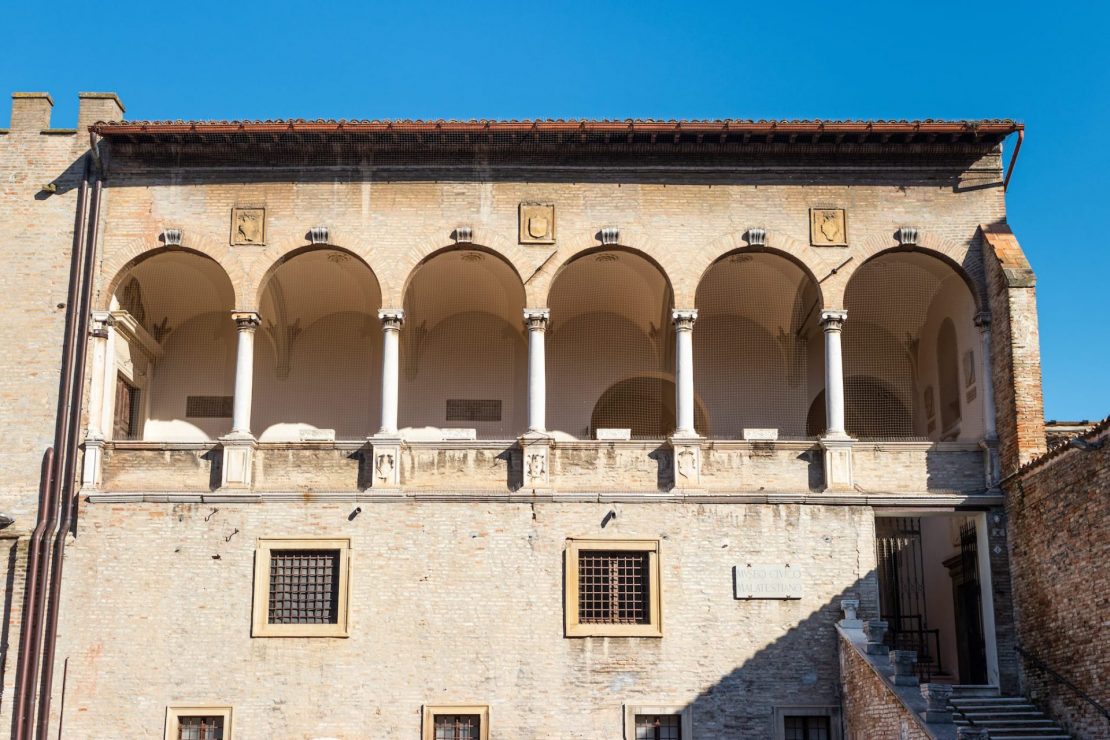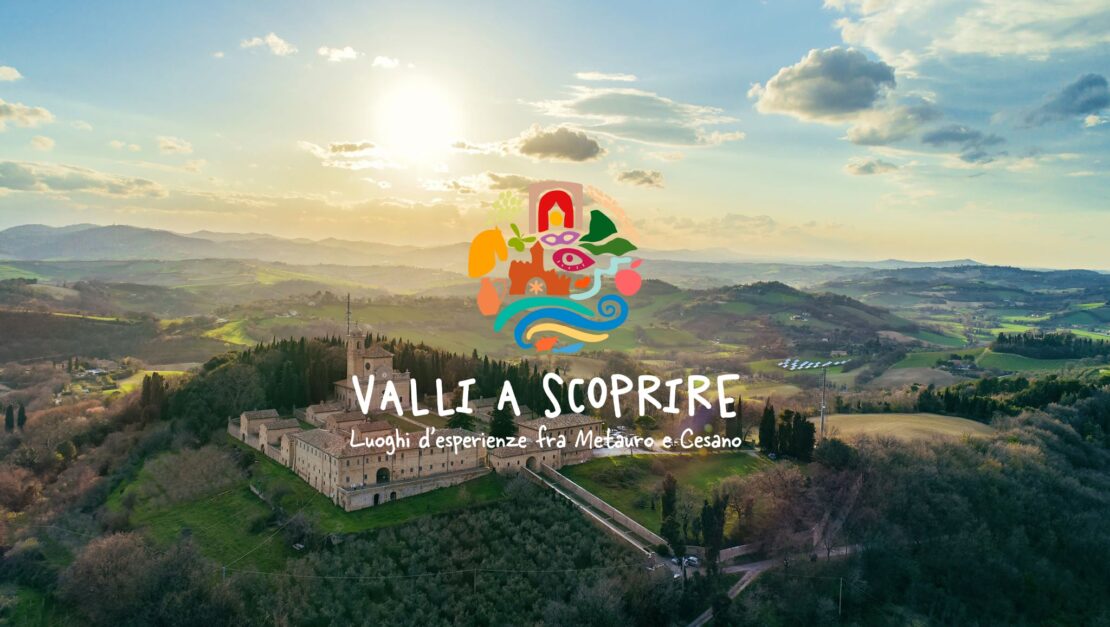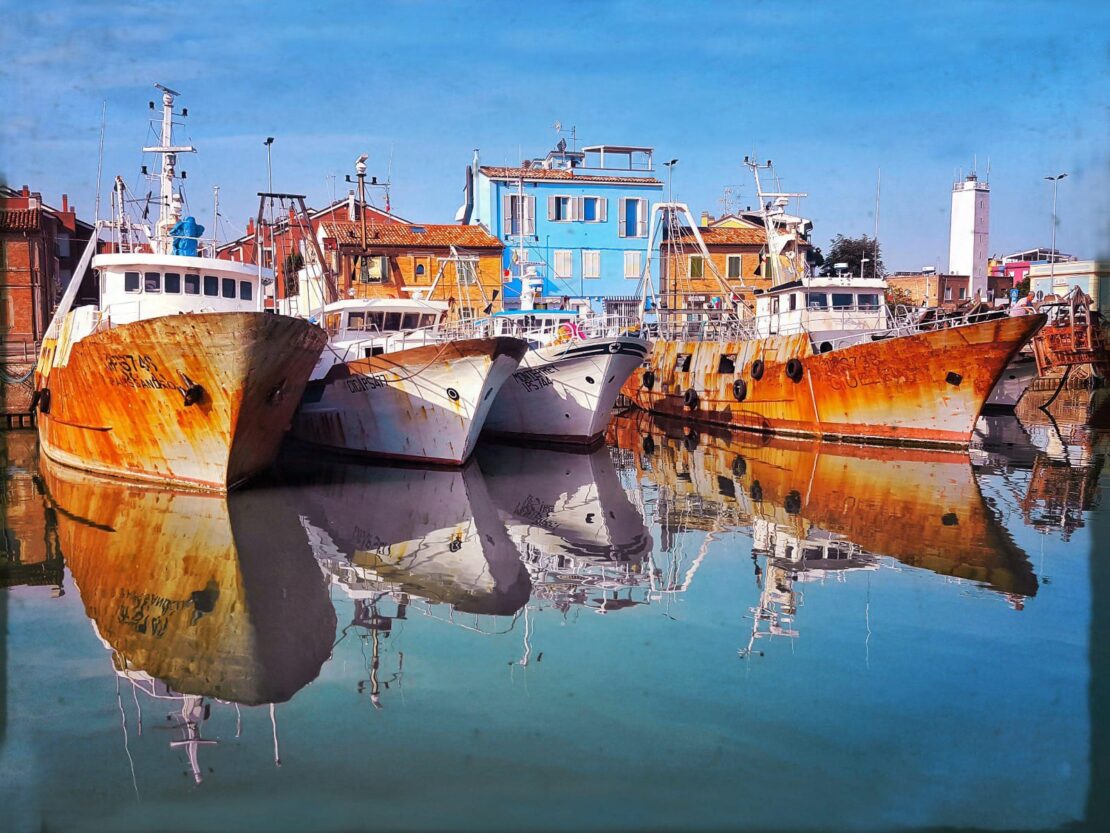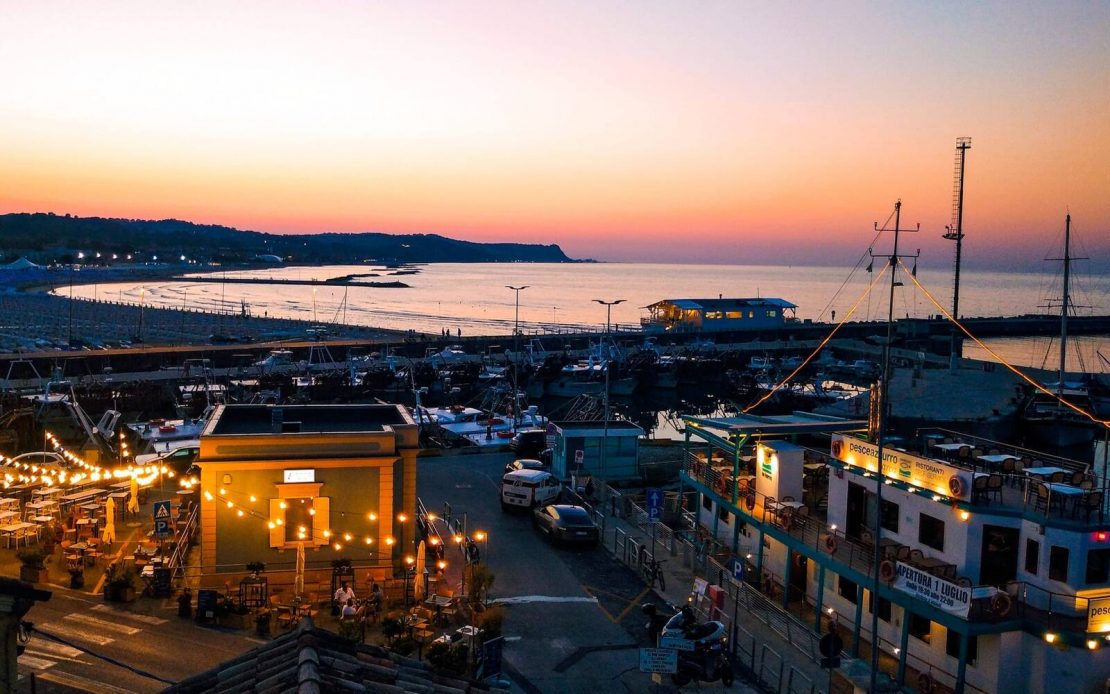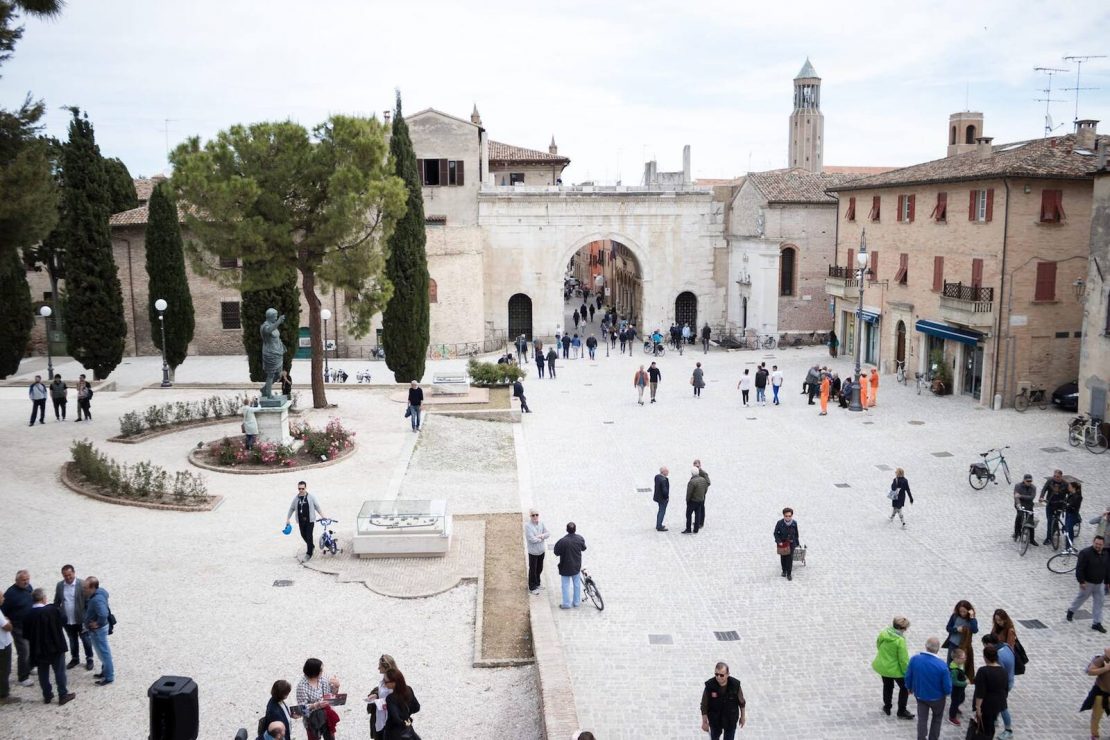The historic center of Fano

Today we want to take you on a tour of Fano’s historic center. A fascinating place to discover on foot, where distances are shortened and where you will have the opportunity to go from one square to another in a matter of minutes.
A journey that will take you through the most popular neighborhoods, such as the Piattelletti, to the scenic squares, monuments, churches and stately palaces, silent narrators of life, history and culture. An unmissable stop on your vacation in Fano!
The historic center of Fano still traces the ancient Roman urban layout of Fanum Fortunae, with the main streets of the cardo and decumanus and orthogonal axes that gradually developed all around it. The dense network of small streets is one of the most striking features of the settlement. Discovering the historic center of Fano is an experience for all tastes, you will have the opportunity to admire the beauty of the city, relax in the many clubs that enliven it or indulge in some good shopping.
But let’s get started!
The Basilica of San Paterniano
Find out in our in-depth look at the history of the Basilica of San Paterniano, which houses the relics of the city’s patron saint.
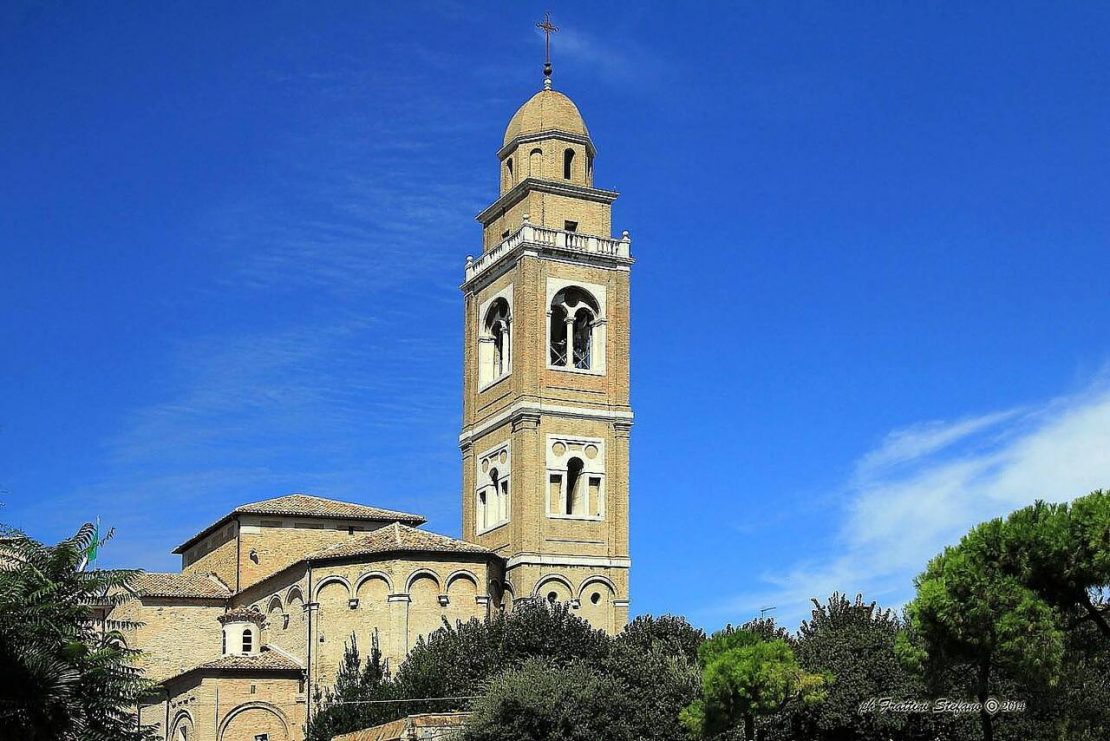
Corso Matteotti and Piazza XX Settembre
Here you will find yourself strolling, or better yet “taking a bath,” along Corso Matteotti. One of the city’s certainly busiest places, surrounded by historic buildings and several stores that will lead us to the heart of Fano: Piazza XX Settembre, the ancient platea magna of the late Middle Ages. This is a prestigious and singular place in the city, where historical-artistic evidence from different eras, ranging from the Roman era to after World War II, coexist together.
The Fountain of Fortune
To welcome you, in XX Settembre Square, you will find the Fountain of Fortune. The earliest records of a fountain in the square date back to 1552, but it did not become functional until February 20, 1576 when water was first brought to the square. The statue of the Goddess of Fortune surmounting it is a copy of the original (now housed in the Malatesta Palace Museum) made in 1593 by Donnino Ambrosi of Urbino. If you observe it well, you will notice that the goddess’s fluttering veil is facing the opposite direction of her hair, precisely signifying the elusive nature of luck.
The Palace of the Podesta now the Fortuna Theater
The Palace of the Podesta, on the other hand, imposingly overlooks the square. Built in 1299 to house the new Podesta of Fano, it has been the home of the Teatro della Fortuna since the 17th century. First built by Fanese stage designer Giacomo Torelli, the theater was then rebuilt between 1846 and 1863 by Luigi Poletti and remained active until 1944, when it was bombed and severely damaged during World War II. It was reopened to the public only in 1998, but since then it has offered a top-notch program of performances ranging from drama, opera, concerts, and children’s theater.
The Church of St. Sylvester
The Church of St. Sylvester, also known as the Church of Our Lady of the Square because of the painting that graces its altar, on the other hand, is the only religious building facing XX September Square, and is also one of the oldest churches in the city dating back to the 12th century. Did you notice that the altar rests on a Roman capital?
The Malatesta Palace
Last but not least is the Malatesta Palace, the residence commissioned by the Malatesta family, the lords of Fano from 1357 to 1463. The Malatestas wanted the construction of a grand palace suitable for a modern Renaissance court, like theirs.
The oldest part, the part that today houses the offices and management of the Cassa di Risparmio di Fano, was built at the behest of Galeotto I Malatesta after 1357. The most recent part was erected by Pandolfo III Malatesta between 1413 and 1423 and, since 1898, has housed the civic museum. The Malatesta Palace Museum is divided into four sections:
- the Pinacoteca, a fascinating placewhere the most important paintings made between the late 13th and 18th centuries from churches and private collections in Fano are displayed: with canvases by Guido Reni, Guercino, Simone Cantarini and many others.
- The Archaeological section, houses the most important and interesting artifacts of Fano’s ancient past, from prehistoric times to the Roman period of Fanum Fortunae, among all of which the beautiful mosaic of the Panther and the statue of the Goddess of Fortune stand out.
- The section of Ceramics and Numismatics, in the former are exhibited fragments and artifacts dating from the 14th to the 19th century, while in the latter we find coins ranging from the 3rd century BC. C. until the 20th century A.D. C.
- The completely renovated Morganti Hall has become the venue for important temporary exhibitions for the past few years.
A visit to his collections is more than worthwhile!
San Domenico Picture Gallery
Not far from the Malatesta Palace Museum, behind Piazza XX Settembre, here is another museum worth visiting: the San Domenico Picture Gallery. The Pinacoteca housed in the charming former church of the same name holds a very fine collection ranging from the 14th to the 18th century, where you will find works by Guercino, Simone Cantarini, Sebastiano Ceccarini, Federico Barocci and many others.
In addition to this, Piazza XX Settembre, is a place of exchange and meeting, full of life, where it is still possible to meet children playing free and carefree, while others relax in the many clubs that enliven it.
The Church of Santa Maria Nuova
Here we are in one of the most fascinating churches in Fano, a real gem with works by some of the most important artists of the 15th century, among them, we find, Giovanni Santi, Perugino and it is thought even a young Raphael.
The Tower Houses
Unique in their kind and striking in their architecture are the five tower houses of medieval origin scattered throughout the historic center. They are fortified buildings, normally used as dwellings but which could, if necessary, become defensive and military structures.
Andrea Costa Square: discovering the authentic tastes of the city
Fano’s seafaring tradition can also be felt in the city’s historic center, especially in Andrea Costa Square, where the indoor fish market takes place. Here you will find, every morning, Monday through Saturday, the best of the city’s seafood. Also held in this square every morning is the fruit and vegetable market!
Via Vitruvius and the fascinating underground passages of St. Augustine’s.
Crossing Andrea Costa Square you will find yourself on Vitruvio Street, where you will encounter the Church of St. Augustine, severely damaged during World War II and now being restored; in its basement are impressive ruins belonging to a large Roman building, which will surprise you.
Via Arco d’Augusto, the Pincio and the still vibrant romanity.
Move a little further and here you come to Via Arco d’Augusto, the ancient Roman decumanus.
As you walk down it you will find the Cathedral of Santa Maria Assunta, which houses the wonderful Nolfi Chapel, frescoed by Domenichino, and Via Rinalducci where you will find the small but valuable church of San Pietro in Episcopio, the oldest church in the city.
But continuing to the end here you are at the Pincio, the place where the Via Flaminia reached Fano and had its first landing at the sea, and then continued on to Rimini. We therefore find ourselves in the heart of Fano’s Romanesque character.
The Arch of Augustus
Massive and imposing, the Augustus Arch is the symbol of Fano. The gateway was built beginning in 9 AD. C. at the behest of Emperor Augustus during the city’s major monumentalization project. Today the Arch no longer has the upper colonnade, which was torn down by Federico da Montefeltro’s troops, but it still retains its charm.
The Museum of the Via Flaminia in the former church of St. Michael
Adjacent to the Augustus Arch is the small former St. Michael’s Church, which houses the innovative Museum of the Via Flaminia where through the aid of new technologies, augmented reality viewers, tablets and screens it tells the story of the ancient Marches route of the Via Flaminia.
But if you stop to look at its facade, on the right side, you will find a bas-relief depicting the Arch of Augustus as it was in the time of ancient Rome, a truly unique testimony.
Plus from the top of the Pincio Gardens it is possible to have a unique view of this part of the city. Try to relax a little bit-it’s really worth it.
Via Mura Augustee and Rocca Malatestiana
From the Pincio, we conclude our visit to Fano by walking along the ancient Augustan walls. Did you know that Fano still retains a section of Roman wall equal to about one-third of its original perimeter? The walls were also desired by Emperor Augustus in the major monumentalization project of the city that took place on 9 AD. C. and were built following the rules reported by the famous architect Vitruvius in the 5th book of De Architectura. The ashlars are in fact drywalled with projecting towers arranged between them at the standar distance of an arrow shot.
Continuing on, you will come across another gate of Roman origin, after the Arch of Augustus: the Porta della Mandria, used to convey traffic leaving Fano in a northerly direction, toward Pesaro. If you notice, in fact, the inner corners of the door frame are worn out!
You will end your visit to Fano’s historic center at the Rocca Malatestiana, built starting in 1438 at the behest of Sigismondo Malatesti, who oversaw its design with architect Matteo Nuti. Work was completed in 1452 with the erection of the imposing Keep, a large watchtower, which was unfortunately destroyed during the bombing of World War II.
Today the fortress has been carefully restored and is one of the main containers for events and performances in the city.

